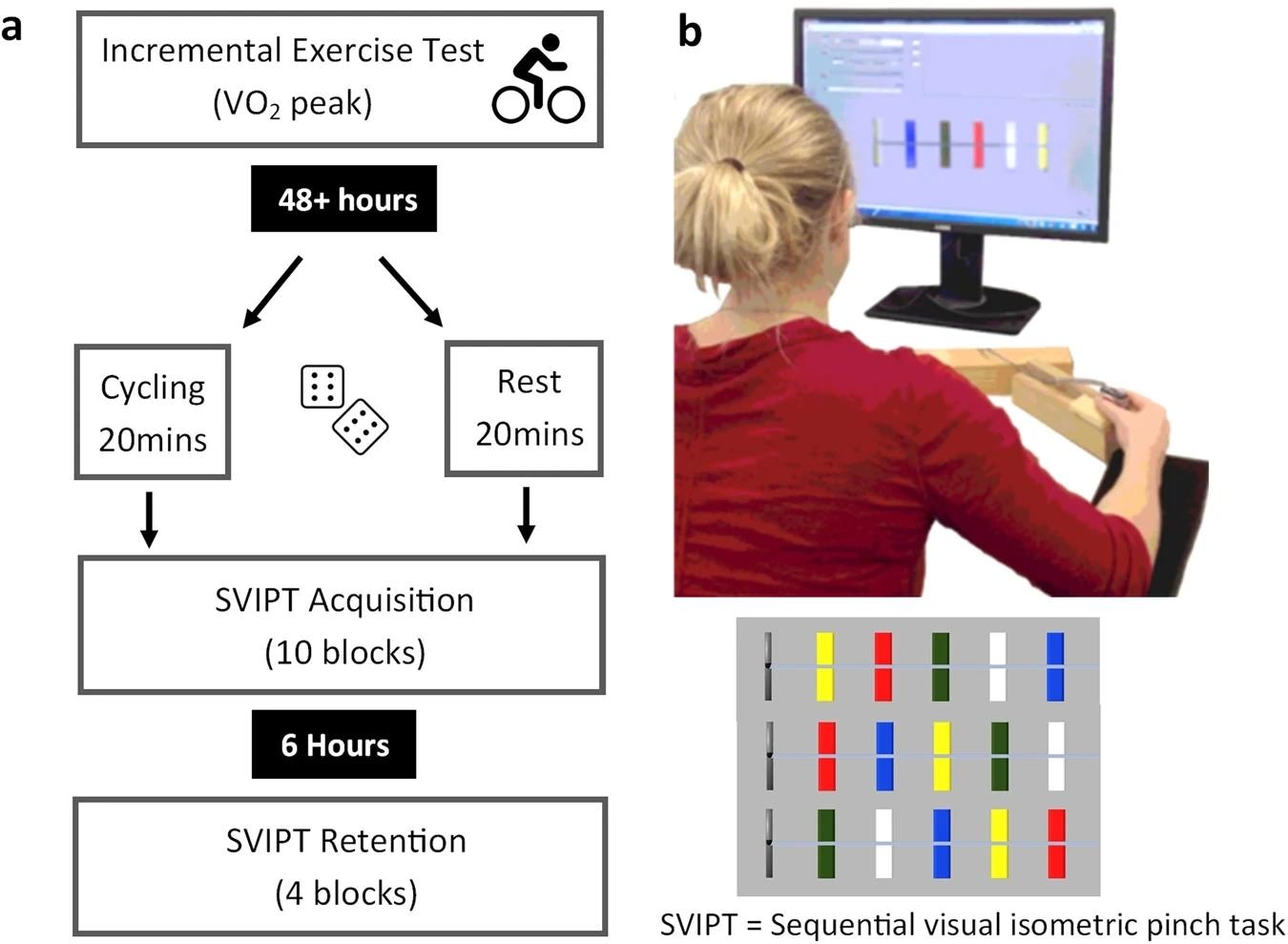In a recent study published in the journal NPJ Science of Learning, researchers investigated the impacts of high-intensity interval training (HIIT) on the subsequent motor skill acquisition efficiency in older adults. They conducted visual isometric pinch task (SVIPT) assays on a cohort of 24 adults aged 55 to 75 years and found that, while HIIT improves the early offline consolidation of novel motor skills, their acquisition of these skills was not benefitted, and at times even negatively impacted, contrasting previous findings. These findings provide valuable insights for experts involved in exercise-assisted motor learning, especially in older populations.
 Study: High-intensity acute exercise impacts motor learning in healthy older adults. Image Credit: Air Images / Shutterstock
Study: High-intensity acute exercise impacts motor learning in healthy older adults. Image Credit: Air Images / Shutterstock
The link between exercise and motor skills
One of the most crucial aspects of routine daily functioning is motor learning, the acquisition and familiarization (gradual improvements in efficiency) of novel motor tasks. Previous research has categorized this process into two interrelated steps: the online learning of a new skill, which encapsulates repletion-aided efficiency improvements over time, and the offline consolidation period, during which the skill is encoded into memory.
Studies comparing age-relative motor learning capacities between younger and older cohorts suggest that while younger individuals learn simple tasks at approximately the same online pace as their older counterparts, their capacity for acquiring complex or cognitively demanding skills far outweighs those of the older populations. Experiments investigating the consolidation potential of individuals reveal similar findings, with younger individuals observed to have better retention test performances and be less susceptible to retention interference than older individuals.
Recent research indicates that exercise may play a crucial role in memory and motor skill acquisition and learning, with evidence available for both online and offline learning benefits. However, while few studies have found positive associations between acute cardiorespiratory exercise and motor learning and performance, most of the literature elucidates the offline consolidation benefits of this and other high-intensity interval training (HIIT) regimes. Some studies further hypothesize that exercise may improve cognitive and motor function outcomes in chronic diseases like Parkinson’s and Huntington’s.
Unfortunately, while these findings have been extensively validated in younger cohorts, evidence from senior citizens remains lacking. Acute exercise’s potential benefits mainly, remain unexplored. Verifying these benefits and elucidating the mechanisms governing them may result in the development of novel interventions aimed at delaying cognitive and motor-function decline among the world’s growing aged population.
“In older adults, greater cardiorespiratory fitness and increased engagement in leisure activities are associated with better motor sequence learning and greater capacity to induce plasticity in the motor cortex. However, a single bout of exercise may be more accessible compared to longer exercise interventions for older adults, who face increased barriers to exercise.”
About the study
In the present study, researchers used the sequential visual isometric pinch task (SVIPT) to evaluate the associations between acute exercise and motor learning in an elderly cohort comprising 24 participants between 55 and 75 years old. The SVIPT test evaluates both explicit and implicit motor learning stages, making it ideal for these investigations. The study employed a between-group study design, with each included participant randomly assigned to a case (exercise) or control (active rest) cohort.

a Overview of testing schedule. An incremental exercise test was conducted at least 48 hours before subsequent testing. Participants were randomised into Rest or Exercise conditions. Acquisition and retention of the motor task were completed on the same day with a 6 ± 1-hour delay between testing. b Depiction of SVIPT motor task adapted from Stavrinos & Coxon. In this version of the SVIPT, three motor sequences are presented in a pseudorandom order within each block of 12 trials. This is a more cognitively challenging version of the SVIPT that requires the trial-to-trial recall, planning, execution, and learning of multiple sequences.
Data collection comprised demographic and anthropometric records and medical assessments. Individuals with preexisting chronic conditions were excluded from analyses. Study interventions included a baseline cardiorespiratory fitness assessment (using a peak oxygen consumption [VO2 peak] during graded physical exercise), a subsequent 48-hour delay, and finally, an experimental session comprising 20 min of HIIT followed by SVIPT.
The HIIT exercise was conducted using a Wattbike Atom stationary bicycle with a Polar H10 used for continuous heart rate monitoring. Baseline SVIPT readings were used to compute each participant’s unique maximum voluntary pinch contraction (MVC), which was incorporated as a standardizing variable in subsequent follow-ups.
“Performance on the SVIPT was assessed by calculating a skill measure, with higher values reflecting a shift in the speed-accuracy trade-off function towards faster and more accurate task performance.”
Independent sample t-tests and linear mixed models were used to evaluate between-cohort differences.
Study findings
Baseline between group comparisons revealed no statistically significant differences in case and control cohorts based on age, sex, physical activity level, body mass index (BMI), resting heart rate (HR), and, notably, retention test delay and force error. SVIPT performance assays revealed profound age- and block-related differences in motor tasks – younger individuals were observed to display improved motor learning during both active exercise and rest phases (online and offline) compared to older individuals.
Furthermore, older individuals displayed improved resting retention performance following HIIT compared to control groups devoid of exercise. In contrast, acute exercise was observed to reduce online motor skill acquisition, with participants who partook in physical exercise performing worse than those who did not.
Conclusions
The present study aims to investigate the association between acute exercise and motor learning in older human populations. While validating hypotheses postulating the benefits of HIIT in promoting memory retention time and offline motor task consolidation, this study’s findings challenge previous literature wherein improvements to online motor acquisition were observed. Surprisingly, participants who took the SVIPT test immediately after acute exercise displayed poorer motor skill acquisition than those who did not.
“Overall, these results demonstrate the importance of individual factors such as age when designing exercise interventions. Furthermore, these results suggest that the benefits of high-intensity exercise on early motor consolidation extend to older adult populations. These findings have implications for supporting older adults in motor rehabilitation settings, providing a potential avenue to ameliorate reductions in motor learning associated with age.”